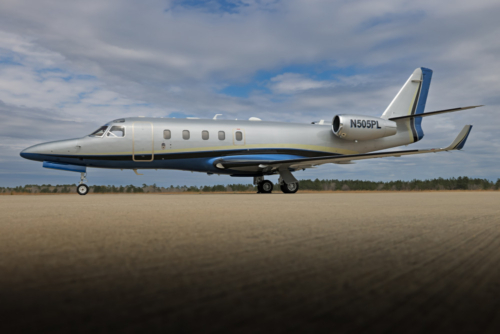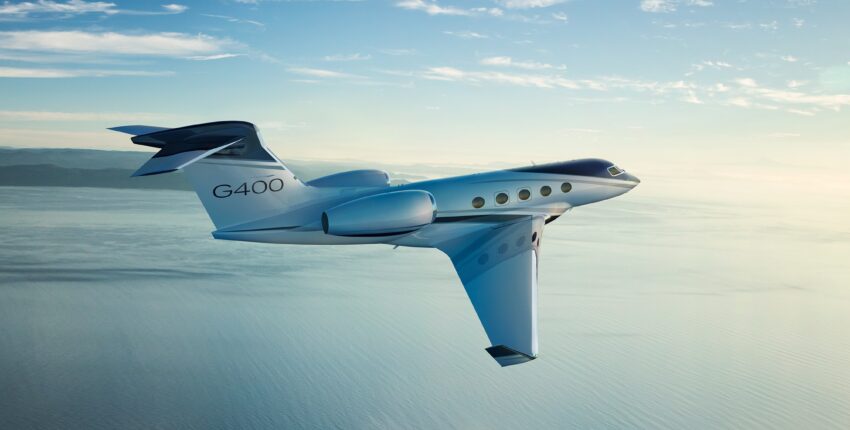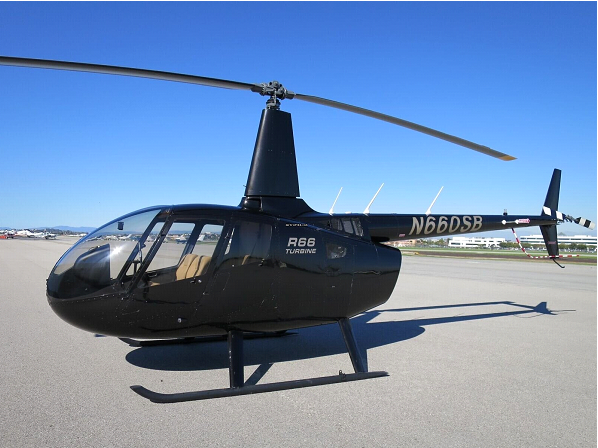Gulfstream G100 (2001) Review: Speed and Comfort in a Proven Midsize Jet
8 min read

When most people hear “Gulfstream,” they picture the company’s massive, ultra-long-range flagships capable of crossing oceans without breaking a sweat. But not every Gulfstream was built to dominate the intercontinental category. In the early 2000s, Gulfstream had a different kind of player in its lineup — the G100. Smaller, faster, and surprisingly capable, this midsize jet proved it could stand toe-to-toe with some of the most respected names in business aviation.
In this review, we’re taking a closer look at the Gulfstream G100, from its origins in the IAI Astra program to its performance, cabin comfort, operating costs, and how it stacks up against its competition. It’s not the flashiest aircraft Gulfstream ever produced, but with solid speed, range, and a comfortable ride, the G100 has earned a loyal following among operators who value capability over sheer size.
History and Development

The Gulfstream G100 didn’t start its life wearing the Gulfstream badge. Its roots go back to Israel Aerospace Industries (IAI) in the 1980s, when the company was developing the IAI 1125 Astra. The first Astra took to the skies in 1984, with deliveries kicking off in 1986. It was designed to be a fast, efficient business jet with respectable range and a more compact footprint than the large-cabin Gulfstreams we think of today.
Over the years, the Astra went through a couple of important evolutions. The Astra SP brought refinements in aerodynamics and systems, while the Astra SPX added more power, better avionics, and improved performance. By the late ‘90s, the Astra SPX was a capable midsize jet, but it wasn’t a household name; at least not outside of aviation circles.
That changed in 2001, when Gulfstream acquired Galaxy Aerospace, the business jet arm that handled the Astra line. With Gulfstream’s marketing power and industry clout, the Astra SPX was rebranded as the Gulfstream G100. This rebranding wasn’t just cosmetic; Gulfstream continued to refine the type and position it as a versatile, cost-effective option for corporate operators and charter companies.
Production of the G100 wrapped up around 2006, when Gulfstream shifted focus to the G150 — a slightly larger, more modern successor with upgraded systems and a more spacious cabin. But the G100 never truly disappeared; many are still in active use today, proving that the platform’s reliability and performance have aged well.
Performance Details
The Gulfstream G100 was built to move, and it doesn’t waste any time getting where it’s going. With a cruise speed hovering around 470 knots, about 540 miles per hour, it sits right in the sweet spot for midsize business jets. It’s fast enough to compete with the Learjet 60 on point-to-point sprints, yet efficient enough to stretch its legs when the mission demands it.
Its range, depending on load and conditions, runs from about 2,500 nautical miles up to 2,950 nautical miles. That’s comfortably transcontinental in the U.S., meaning you can go from Los Angeles to New York nonstop under the right conditions.
In Europe, that kind of range means you can easily connect London with Dubai or cover most of the continent without a refueling stop. This is where the G100 quietly shines: you don’t need to worry about breaking the trip into multiple segments just to get across a country or region.
Another perk is its climb performance. The G100 can get to altitude quickly, often reaching cruising level in under 20 minutes, which helps it slip above most weather and turbulence early in the flight. Once up there, it can cruise at altitudes up to 45,000 feet, giving it a smooth ride and better fuel efficiency. The wing design, inherited from the Astra SPX, offers good stability and predictable handling, which pilots tend to appreciate.
For operators flying into and out of smaller regional airports, the G100’s footprint works in its favor. Its takeoff and landing distances are competitive for its class, allowing access to airports that larger jets can’t comfortably use. That means more direct routing and less time wasted in big, congested hubs.
Cabin
Step inside the G100, and you’ll see it was designed with practicality in mind, but without skimping on comfort. The typical layout seats seven to eight passengers, usually in a club-four arrangement up front, a divan or additional seating in the rear, and an enclosed lavatory at the back. It’s not a sprawling palace, but the way the space is arranged makes it feel more open than the raw numbers suggest.

At just over 4 feet wide and 17 feet long, the cabin offers enough elbow room for passengers to work, hold conversations, or stretch out a bit during the flight. Gulfstream also put effort into noise insulation, so even though it’s not whisper-quiet like some newer jets, the sound levels are low enough that you can talk without raising your voice. The pressurization system is also a win; keeping cabin altitude low on long flights helps passengers arrive feeling fresher and less fatigued.
Interior styling varied between deliveries, but most G100s you’ll find today are fitted with leather seating, fold-out work tables, and storage for personal items and catering supplies. Many operators have also upgraded interiors over the years, adding newer materials, modern LED lighting, or in-flight entertainment systems to keep the aircraft relevant for today’s travelers.
While it won’t give you the “wow” factor of a super-midsize or large-cabin Gulfstream, the G100’s cabin is a smart, efficient space that delivers exactly what it promises: a comfortable ride for several hours without feeling cramped or overly minimal.
Technology & Avionics
For a jet introduced in 2001, the G100 came well-equipped with technology that, at the time, was ahead of the curve. Standard features included GPS navigation, Inertial Reference Systems (IRS), multi-function displays, and key safety systems like TCAS (Traffic Collision Avoidance System), EGPWS (Enhanced Ground Proximity Warning System), and onboard weather radar.

The cockpit layout is ergonomic and pilot-friendly, which reduces workload and makes the aircraft efficient to operate. Pilots familiar with Gulfstream’s approach to flight deck design will appreciate how intuitive the controls are, even if the avionics suite isn’t as glass-heavy as newer jets.
Of course, given that production ended nearly two decades ago, some G100s still in service today may not have the latest avionics packages. Many operators have invested in upgrades, but it’s something prospective buyers should keep in mind, especially with mandates like ADS-B Out now in effect worldwide.
Operating Costs
Operating a midsize jet is never “cheap” in absolute terms, but the G100 has earned a reputation for delivering a solid cost-to-performance ratio. Depending on whose numbers you trust, the variable cost per hour hovers around $2,200 to $2,300, with some estimates going higher when factoring in specific maintenance or fuel prices.
Annual costs can range widely based on utilization. GlobalAir pegs the yearly figure at about $1.36 million for 400 flight hours, or roughly $10.20 per mile. LibertyJet estimates closer to $1.61 million for that same usage, while Aircraft Cost Calculator puts it at $2.18 million for 450 hours. Fixed costs, things like crew salaries, insurance, and hangar fees, generally run around $450,000 per year.
In short, it’s not a “cheap” airplane, but within its class, it holds its own. If you’re flying often enough to keep utilization high, the numbers make more sense. For low-utilization private owners, operating costs can feel heavy compared to newer, more efficient light jets; but then again, those smaller aircraft won’t match the G100’s speed or range.
Competition
In the midsize business jet category, the G100’s main rivals have long been the Learjet 60, Hawker 800XP, and Citation XLS. Each brings something different to the table. The Learjet is known for speed and climb performance, the Hawker for a comfortable cabin and solid range, and the Citation for reliability and versatility.
The G100 stands out with its combination of range, speed, and Gulfstream’s build quality. With a maximum range of around 2,837 nautical miles and a top speed near 448 knots, it can match or outperform many of its peers in pure numbers. Where it sometimes gives ground is in cabin volume; newer midsize or super-midsize designs will feel roomier. But in terms of altitude capability, handling, and long-leg performance, the G100 more than holds its own.
Pros
One of the G100’s biggest selling points is its transcontinental range. Being able to go coast-to-coast in the U.S. or connect major hubs in other regions without a fuel stop is a huge advantage for time-sensitive travel.
Its Honeywell TFE731 engines are proven workhorses. They are reliable, widely supported, and efficient for their output. The airframe itself has a strong track record for durability and predictable handling. The cabin, while not massive, is comfortable and flexible in layout, offering amenities that make long flights more pleasant. Add in a well-equipped flight deck and competitive operating costs for its class, and it’s easy to see why the G100 is still in demand on the pre-owned market.
Cons
On the flip side, the G100 is based on an older design, and production ended in 2006. That means avionics, interiors, and systems may feel dated if they haven’t been upgraded. While the operating costs are reasonable for a midsize jet, they’re still significantly higher than what you’d see in a modern light jet. So for owners who don’t need the range, it may not be the most cost-efficient choice.
And while the cabin is comfortable, it’s not as spacious as what newer midsize or super-midsize jets offer, which can matter for passengers who prioritize space above all else.
Final Verdict
The Gulfstream G100 is one of those under-the-radar business jets that delivers far more than most people expect. It’s fast, has excellent range, and offers a comfortable ride, all wrapped in Gulfstream’s reputation for quality. For corporate operators, charter companies, or private owners who value dependable coast-to-coast performance, it’s a compelling option, especially on the pre-owned market where prices can be surprisingly accessible.
However, anyone expecting the latest in avionics, the quietest cabins, or the most spacious interiors will want to look at newer models like the G150 or other midsize contenders. The G100 is a product of its era, and that’s both its charm and its limitation. For those who understand its strengths and are willing to invest in keeping it modernized, it’s still a very capable jet that can more than earn its keep.







